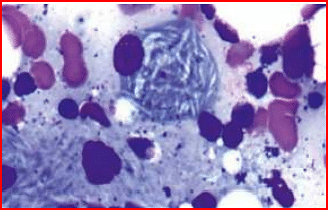Question:
Which one of the following are not strictly macromolecules although obtained in macromolecular fraction during cell content separation?
Which one of the following are not strictly macromolecules although obtained in macromolecular fraction during cell content separation?
Updated On: Jul 27, 2022
- Carbohydrates
- Proteins
- Lipids
- Nucleic acids
Hide Solution
Verified By Collegedunia
The Correct Option is C
Solution and Explanation
During chemical analysis of a cell, when we segregate the chemical components, two fractions are obtained, ajd soluble pool and acid insoluble pool. The biomolecules found in acid soluble pool include proteins, lipids, polysaccharides and nucleic acids. Except lipids, all of these have molecular weights in the range of ten thousand daltons and above and are termed biomacromolecules.
Lipids have molecular weights of about $800$ Da or below and thus, are micromolecules. Still, they separate in the macromolecular fraction because when we disrupt a cell, the membranes are broken into pieces and form small water insoluble vesicles (which mainly contain lipids), which separate in the acid insoluble pool.
Was this answer helpful?
0
0
Top Questions on Lipids
- A patient presents with xanthomas on the Achilles tendon. Which of the following is the most likely diagnosis?
- A patient with multiple tendon xanthomas is found to have a serum cholesterol level of 398 mg/dL and an LDL level of 220 mg/dL. What is the most likely defect?
- Which of the following has the lowest melting point?
- Ceramides are
- A child presents with bone pain and hepatosplenomegaly. A trephine biopsy and aspirate show the following finding. Which of the following is the most likely enzyme deficient in this condition?

View More Questions
Concepts Used:
Lipids
Lipids are organic compounds that are nonpolar molecules, which are soluble only in nonpolar solvents and insoluble in water because of the polarity of the water.
Properties of Lipids:
Lipids are one of the family members of organic compounds, imperturbable of fats and oils. These molecules yield high energy and are mainly responsible for different functionings within the human body. Listed below are some important characteristics of Lipids such as:
- Lipids are oily or greasy nonpolar molecules that are stored in the adipose tissue of the body.
- Lipids are a heterogeneous group of compounds that are mainly composed of hydrocarbon chains.
- Lipids are energy-rich organic molecules, which provide energy for different life processes.
- Lipids are a class of compounds characterized by their solubility in nonpolar solvents and insolubility in water.
- Lipids are consequential in biological systems as they form a mechanical barrier dividing a cell from the external environment known as the cell membrane.